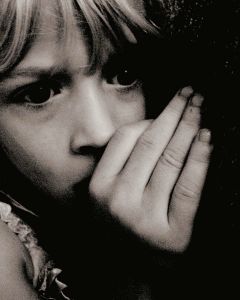Child abuse is a horrible crime that is surprisingly common---more than 3 million child abuse reports are made in the United States each year. It's suspected that many more go unreported.
Often times, the only chance children may have of escaping abuse involves an adult intervention.
This can come from a family friend, a teacher, or a health professional, anyone.
All that matters is that you can recognize the symptoms, and use your voice to speak on behalf of a possible victim.
Things You May Notice from a Child Abuse Victim
If a child is being physically abused, they may exhibit unexplained bruises and welts on the body. The injury may have a pattern that looks like a hand or a belt. If you’re a medical professional trying to examine a child, they might shy away from being touched. They may also express fear about going home. He or she may be on edge or “alert”, expecting some type of punishment or something bad to happen. They may wear long sleeved shirts and other clothes that can hide injuries, regardless of it being appropriate for the weather or not.
*Note to healthcare providers
According to a guide from the American Academy Pediatrics, when a child younger than 2 has injuries that could be abuse related, Xrays should be performed to look for occult bone fractures.
This is necessary because these bone breaks aren’t guaranteed to appear during an exam.
Occult bone fractures may already be healing, or may not need treatment, but it can confirm suspicions of abuse according to Dr. Joanne Wood, the lead researcher on a study analyzing how hospitals screen for child abuse, published in the Pediatrics journal.
Signs of sexual abuse might not be as easy to spot as bruises or broken bones, but there are still many signals.
Take notice if a child has trouble sitting or walking. It may also be a sign if a child goes out of his or her way to avoid a specific person without a clear reason. If a young child feels uncomfortable changing clothes in front of others or doesn’t want to participate in physical activities or has running away from home, you may want to try and have a conversation with the child to see if they’re willing to open up about any issues. If a young child has an STD or becomes pregnant at 14 or younger, that’s a clear sign of foul play that should be reported. Even if it wasn’t abuse at the hand of adults, but rather sexual acts between peers of the same age group, it’s better to be certain.
While none of these signs automatically mean that a child is suffering from abuse, watching out for the indicators will help you to pay closer attention and potentially lead you to a conversation with a child or caregiver that may expose an issue and save the child’s life.
According to Wood, 1,500 kids in the U.S. are killed from abuse and even more are injured.
Familiarizing yourself with the signs can help you protect a child from abuse and change the course of their life for the better. For more information on child abuse, visit this link at Child Welfare: https://www.childwelfare.gov/topics/can/?hasBeenRedirected=1

